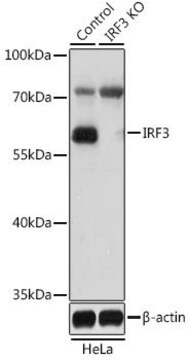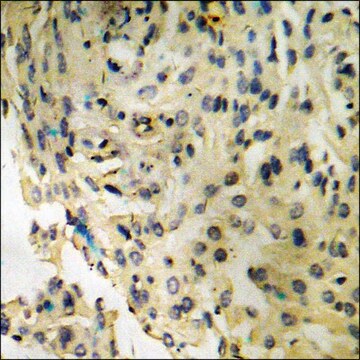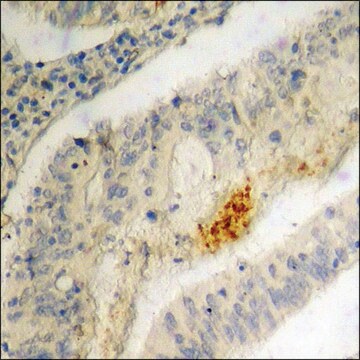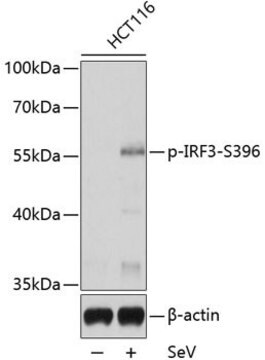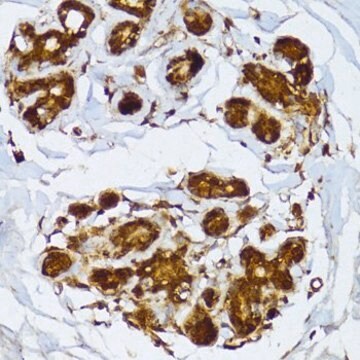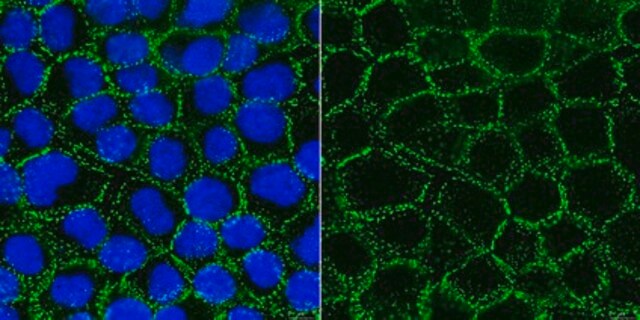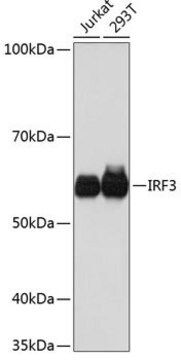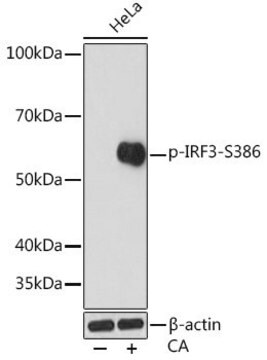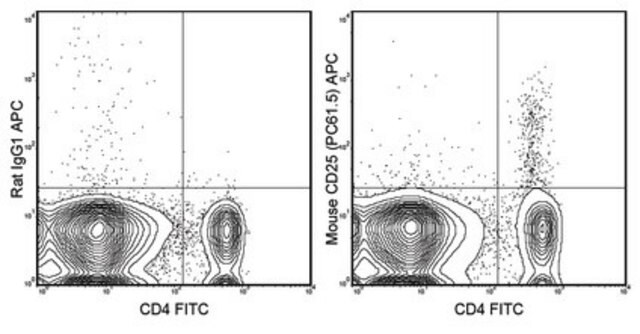About This Item
Polecane produkty
pochodzenie biologiczne
mouse
Poziom jakości
białko sprzężone
unconjugated
forma przeciwciała
purified antibody
rodzaj przeciwciała
primary antibodies
klon
AR-1, monoclonal
masa cząsteczkowa
calculated mol wt 47.22 kDa
observed mol wt ~51 kDa
reaktywność gatunkowa
rhesus macaque, human
opakowanie
antibody small pack of 100 μL
metody
ELISA: suitable
flow cytometry: suitable
immunoprecipitation (IP): suitable
inhibition assay: suitable
western blot: suitable
izotyp
IgG1
numer dostępu UniProt
Warunki transportu
dry ice
temp. przechowywania
2-8°C
docelowa modyfikacja potranslacyjna
unmodified
Opis ogólny
Specyficzność
Immunogen
Zastosowanie
Oceniane metodą Western Blotting w lizacie komórek A549.
Analiza Western Blotting: Rozcieńczenie 1:500 tego przeciwciała wykryło IRF-3 w lizacie komórek A549.
Testowane aplikacje
Analiza ELISA: Reprezentatywna partia wykryła IRF-3 w zastosowaniach ELISA (Rustagi, A., et. al. (2013). Methods. 59(2):225-32).
Analiza cytometrii przepływowej: Reprezentatywna partia wykryła IRF-3 w zastosowaniach cytometrii przepływowej (Rustagi, A., et. al. (2013). Methods. 59(2):225-32).
Analiza Western Blotting: Reprezentatywna partia wykryła IRF-3 w zastosowaniach Western Blotting (Rustagi, A., et. al. (2013). Methods. 59(2):225-32).
Analiza immunocytochemiczna: Reprezentatywna partia wykryła IRF-3 w zastosowaniach immunocytochemicznych (Rustagi, A., et. al. (2013). Methods. 59(2):225-32).
Uwaga: Rzeczywiste optymalne rozcieńczenia robocze muszą być określone przez użytkownika końcowego jako próbki, a warunki eksperymentalne mogą się różnić w zależności od użytkownika końcowego.
Postać fizyczna
Przechowywanie i stabilność
Inne uwagi
Oświadczenie o zrzeczeniu się odpowiedzialności
Nie możesz znaleźć właściwego produktu?
Wypróbuj nasz Narzędzie selektora produktów.
Kod klasy składowania
12 - Non Combustible Liquids
Klasa zagrożenia wodnego (WGK)
WGK 1
Temperatura zapłonu (°F)
Not applicable
Temperatura zapłonu (°C)
Not applicable
Certyfikaty analizy (CoA)
Poszukaj Certyfikaty analizy (CoA), wpisując numer partii/serii produktów. Numery serii i partii można znaleźć na etykiecie produktu po słowach „seria” lub „partia”.
Masz już ten produkt?
Dokumenty związane z niedawno zakupionymi produktami zostały zamieszczone w Bibliotece dokumentów.
Nasz zespół naukowców ma doświadczenie we wszystkich obszarach badań, w tym w naukach przyrodniczych, materiałoznawstwie, syntezie chemicznej, chromatografii, analityce i wielu innych dziedzinach.
Skontaktuj się z zespołem ds. pomocy technicznej